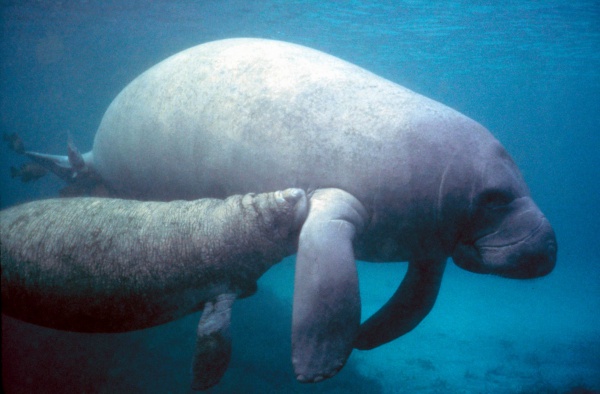Facts About West Indian manatee
The West Indian Manatee, affectionately known as the "sea cow" is the largest surviving member of the Sirenia order of aquatic mammals. This gentle giant is divided into two subspecies: the Florida manatee and the Antillean, or Caribbean, manatee. The Florida subspecies predominantly inhabits the coasts of Florida, while the Antillean manatee exhibits a more dispersed distribution throughout the Caribbean, ranging from Mexico to Brazil.
Manatees are exclusively herbivorous and exhibit a fascinating mode of communication through vocalizations. They are equipped with extremely sensitive whiskers, or vibrissae, which assist them in feeding and navigating their aquatic environment. During the breeding season, several males congregate around a female, resulting in the birth of a single calf every two to three years. Due to successful conservation efforts, the West Indian manatee, once classified as endangered in the 1970s, was reclassified as "threatened" in 2017.
These marine mammals are remarkably adapted for aquatic life. They possess streamlined bodies, a paddle-shaped tail for swimming, and flexible snouts for feeding. Their teeth are unique, being continuously replaced throughout their lives in a conveyor belt-like system. Manatees also have dense bones that aid in remaining submerged and rely on their whiskers for tactile feedback and navigation. They primarily consume aquatic vegetation, with seagrass being their preferred choice.
Manatees can be found from the warm waters of Florida to as far north as Massachusetts and as far west as Texas. They favor shallow coastal areas, rivers, and estuaries, gravitating towards warm waters due to their slow metabolic rate. However, these gentle giants face numerous threats, including boat collisions, loss of warm-water habitats, red tide events, and habitat fragmentation.
In terms of reproduction, manatees form mating herds. After a gestation period of 12-14 months, a single calf is born. Males do not participate in raising the young, leaving the calves dependent on their mothers for up to two years. Conservation efforts are vital to mitigating threats such as boat collisions and habitat loss to ensure the survival of both Florida and Antillean manatee populations.
The Florida manatee, in particular, faces significant challenges from boat collisions and the loss of warm-water habitats. Conversely, data on the Antillean manatee population remains limited. Conservation strategies are focused on monitoring population trends, reducing human-related mortality, and protecting critical habitats. These measures are crucial for preserving the future of these unique and vulnerable marine mammals.

 Guatemala
Guatemala